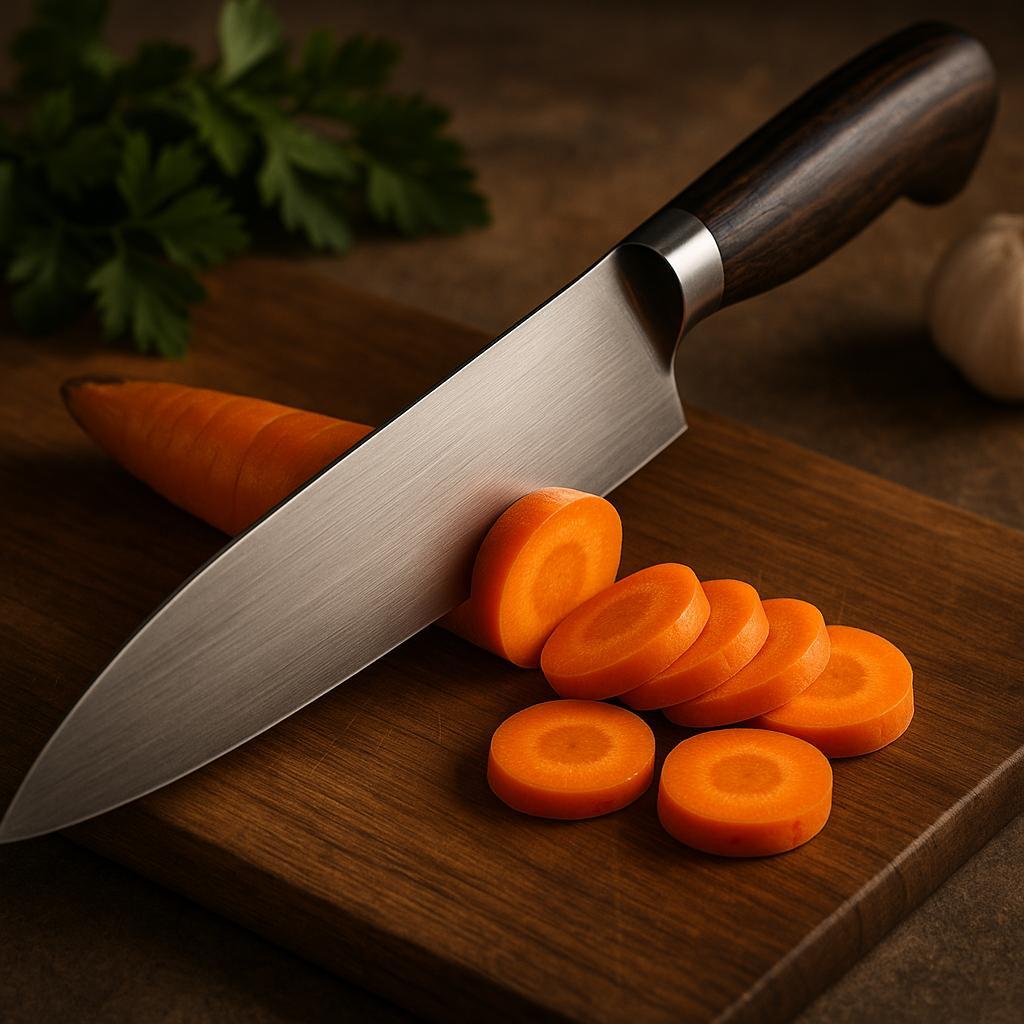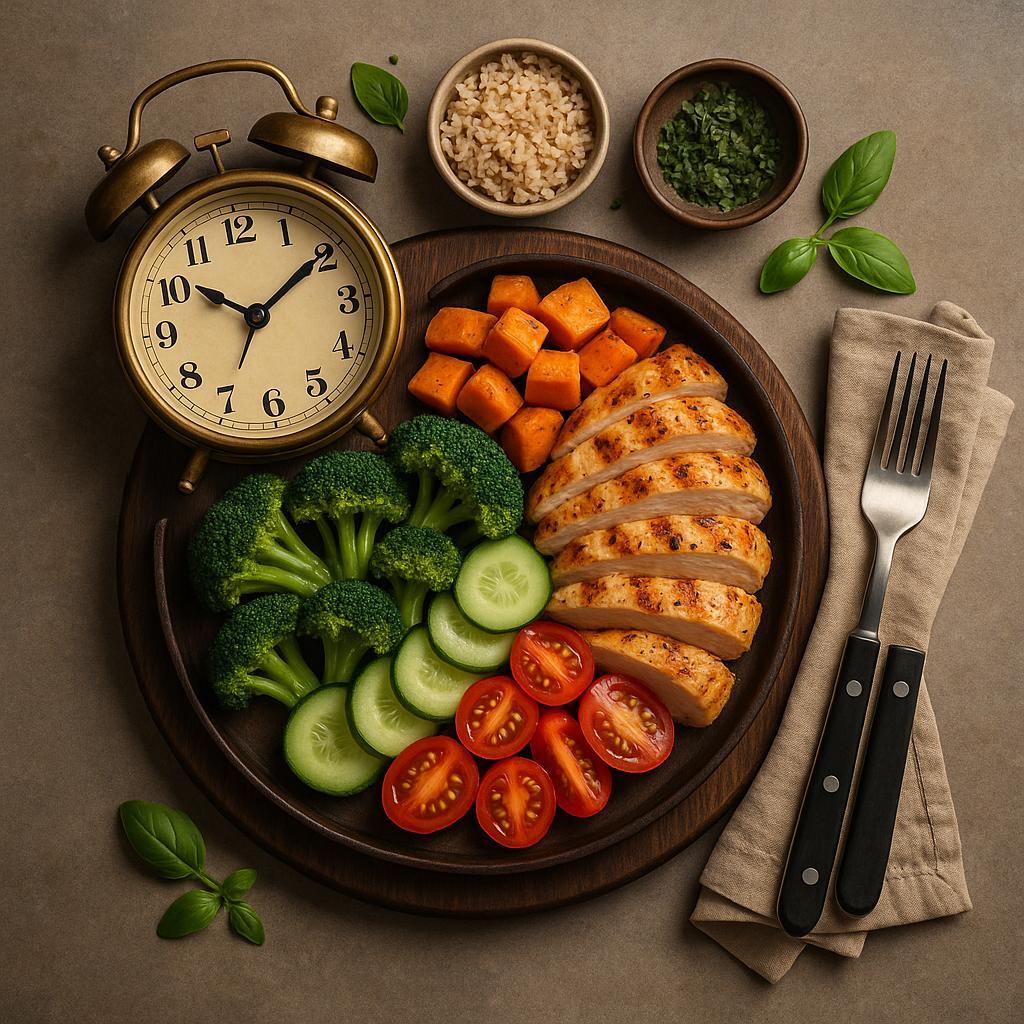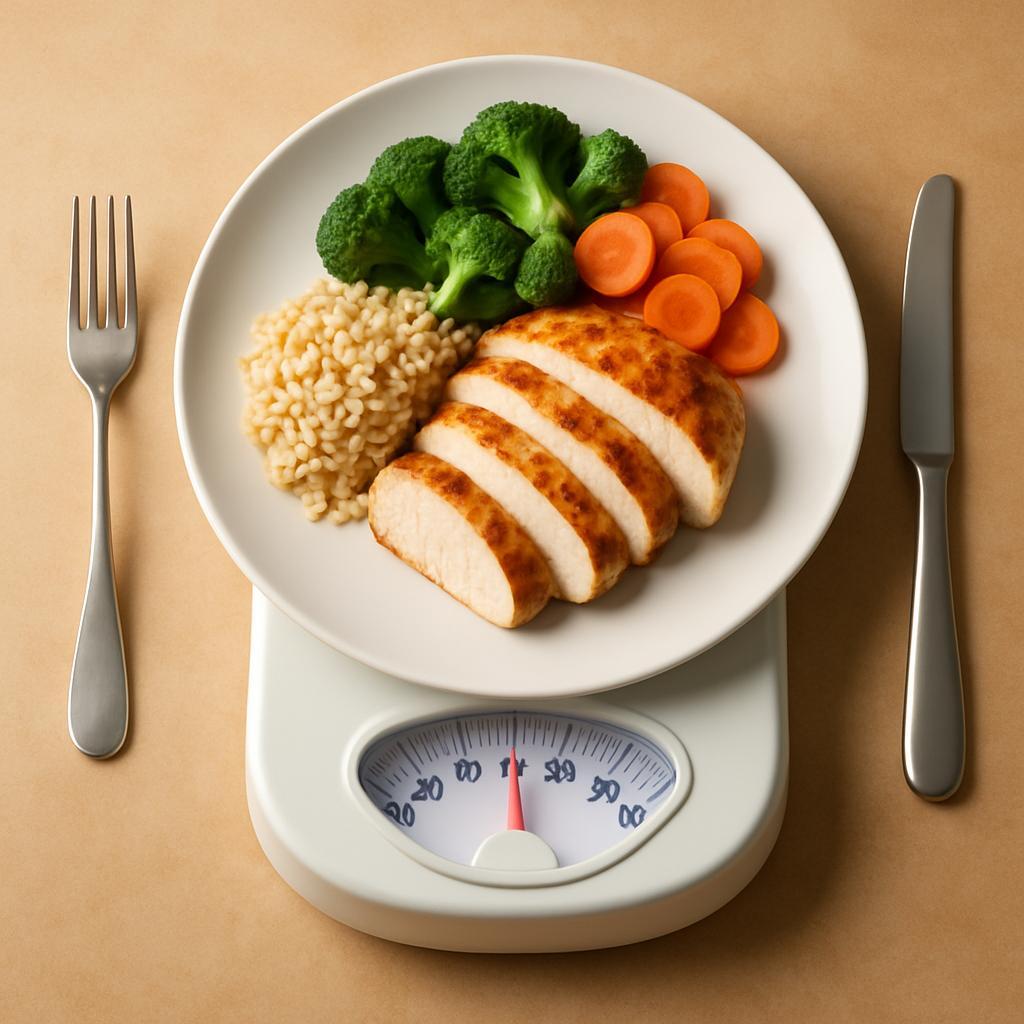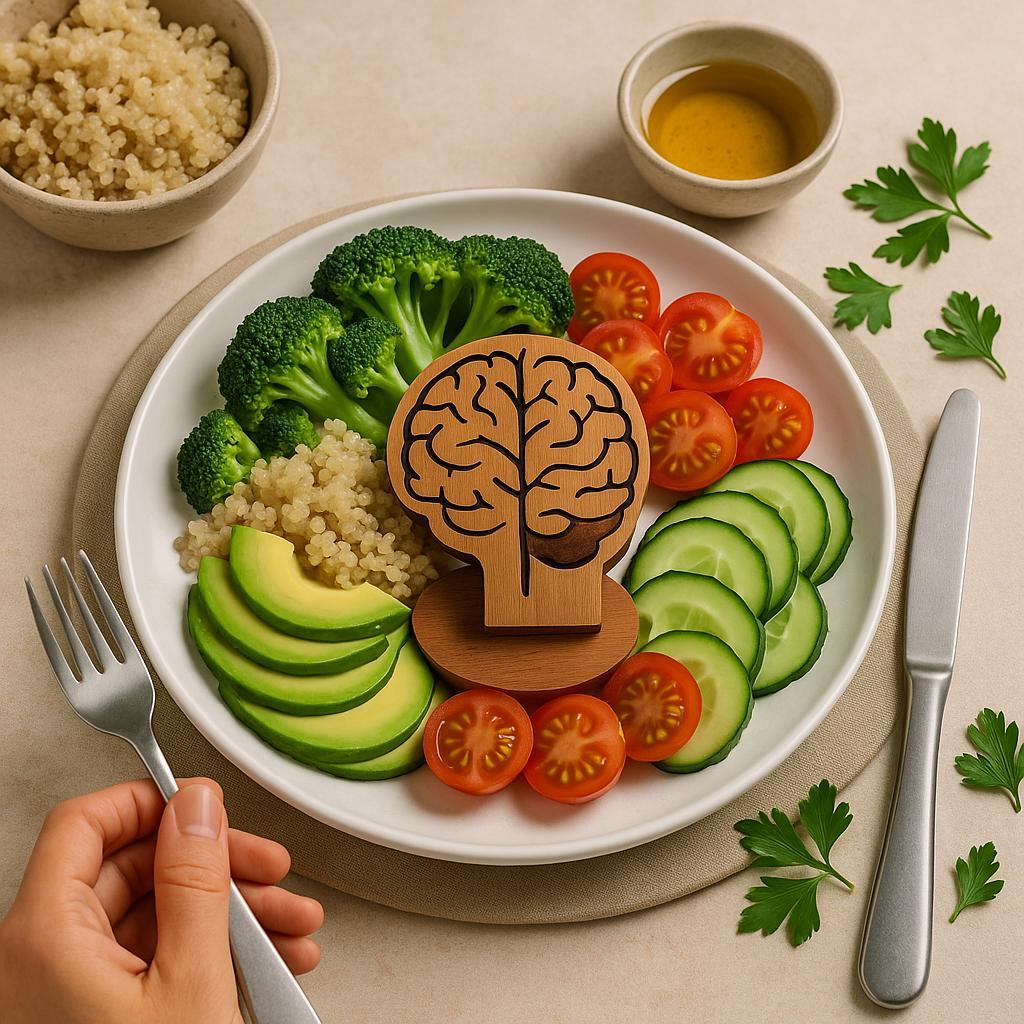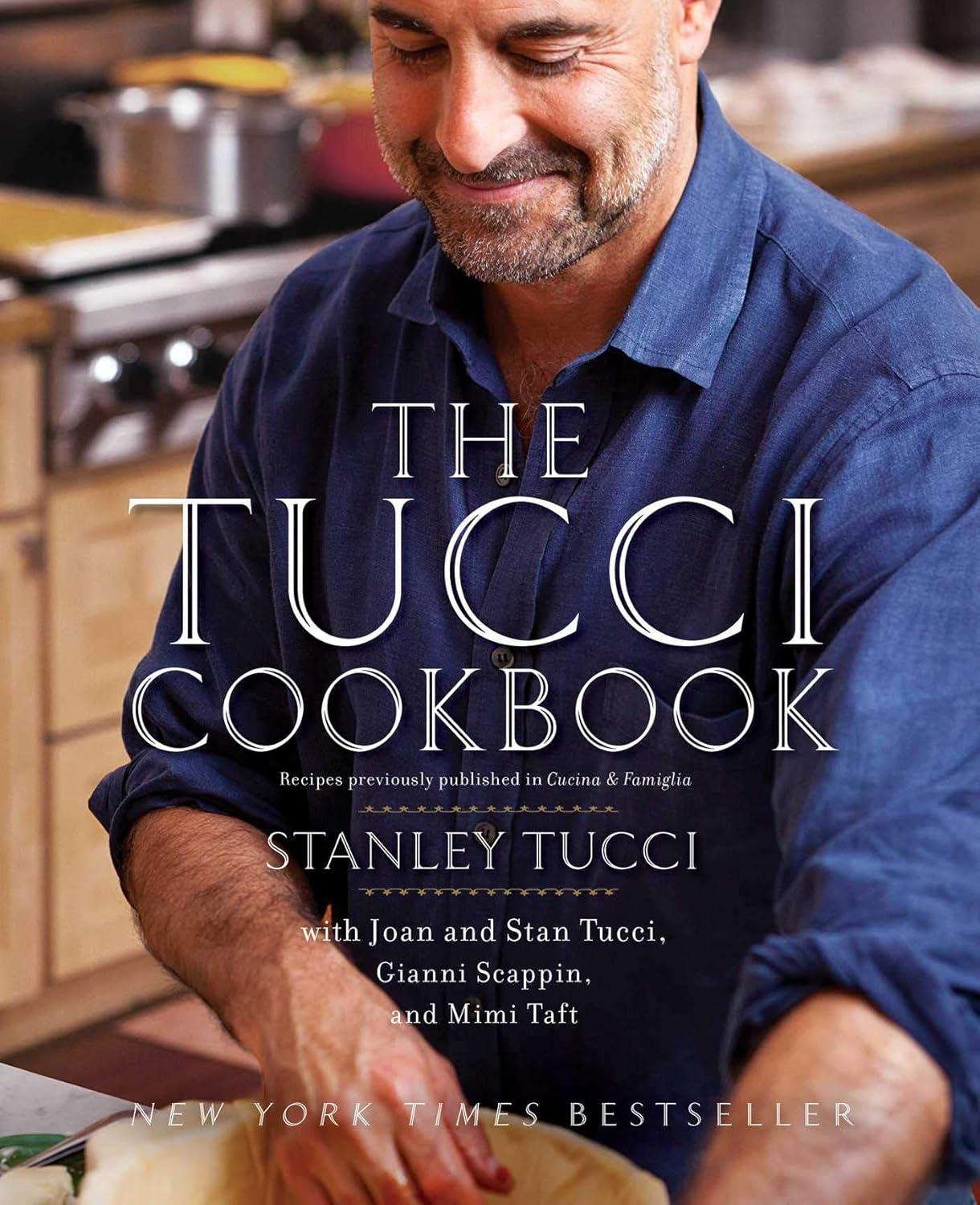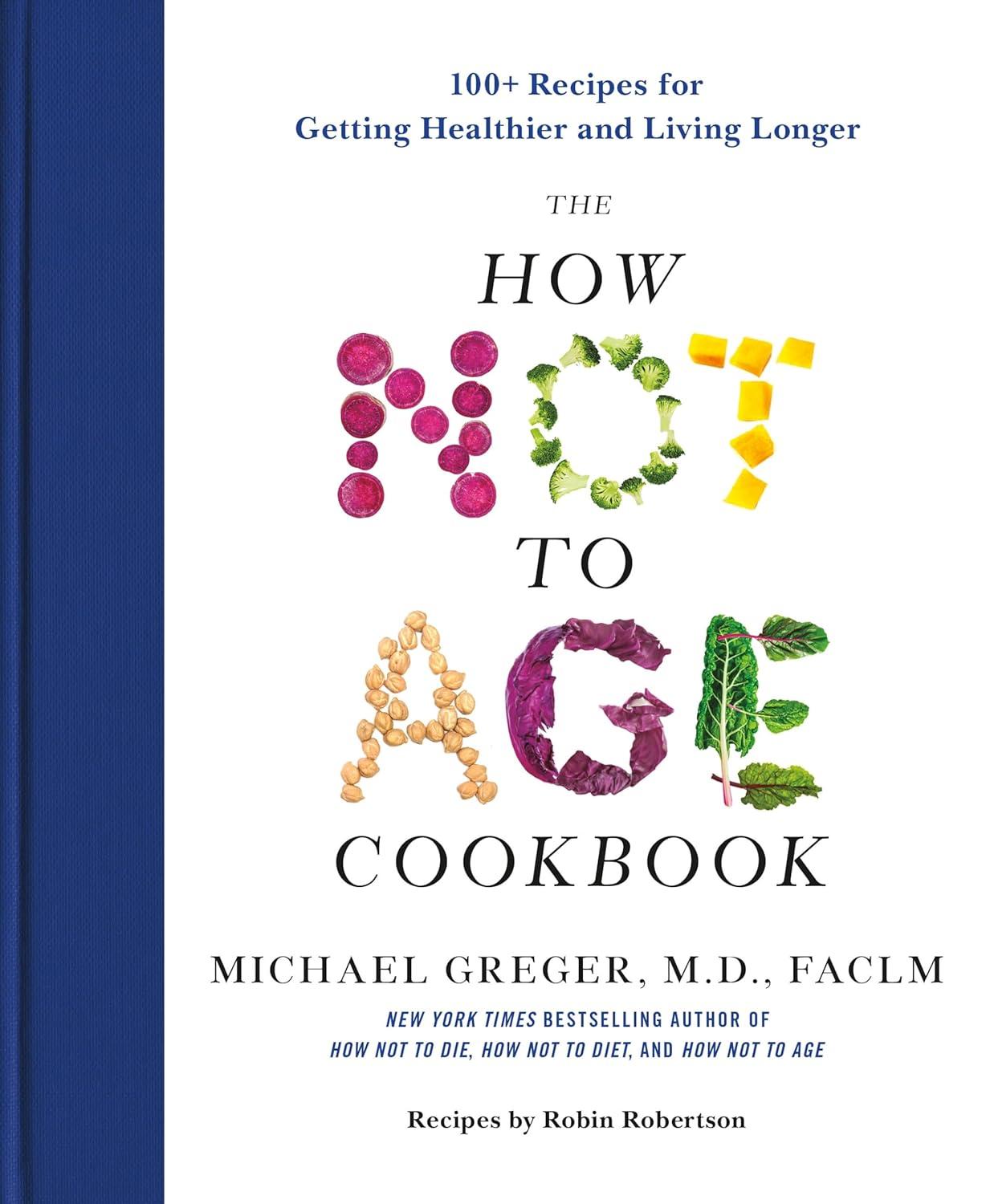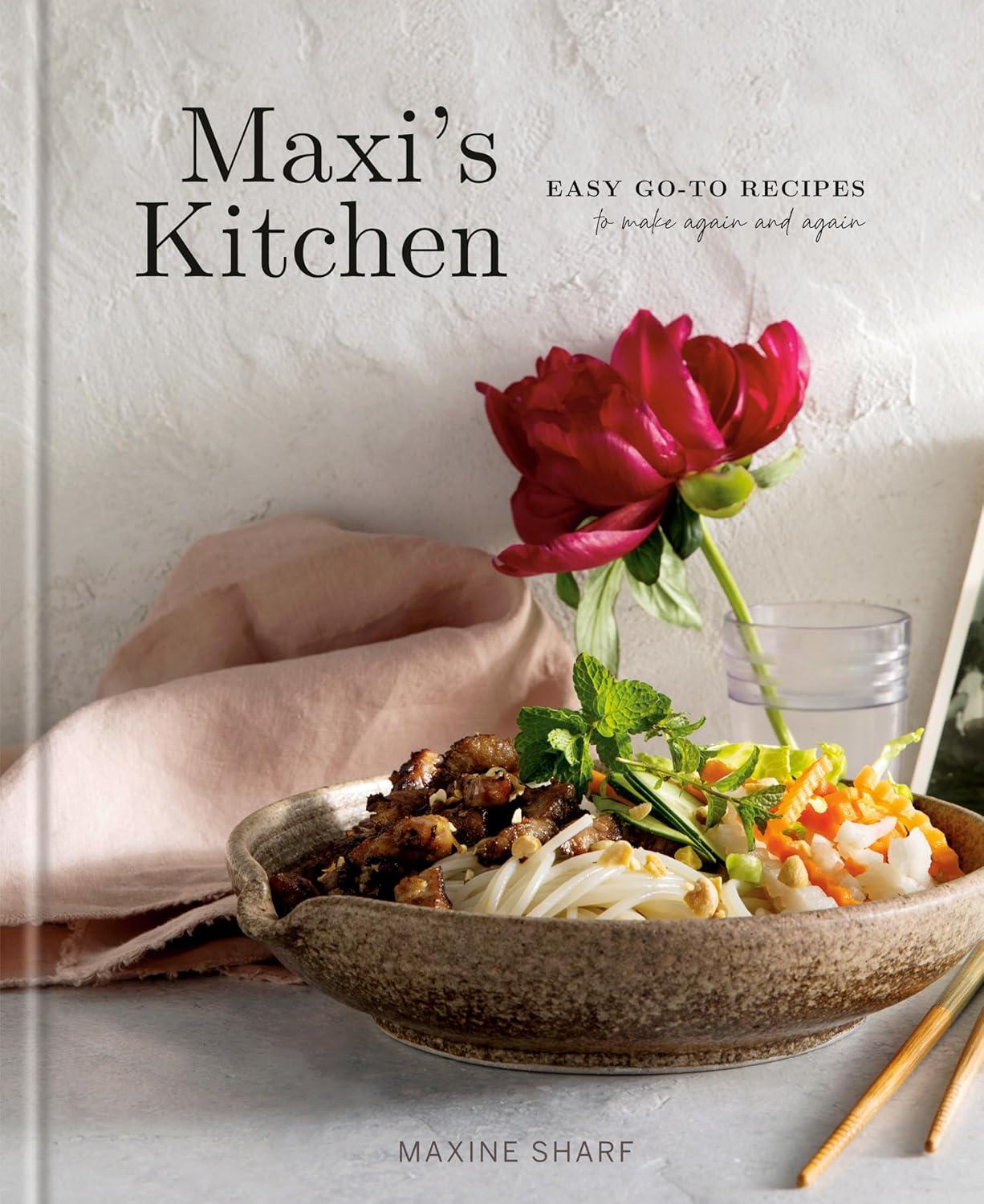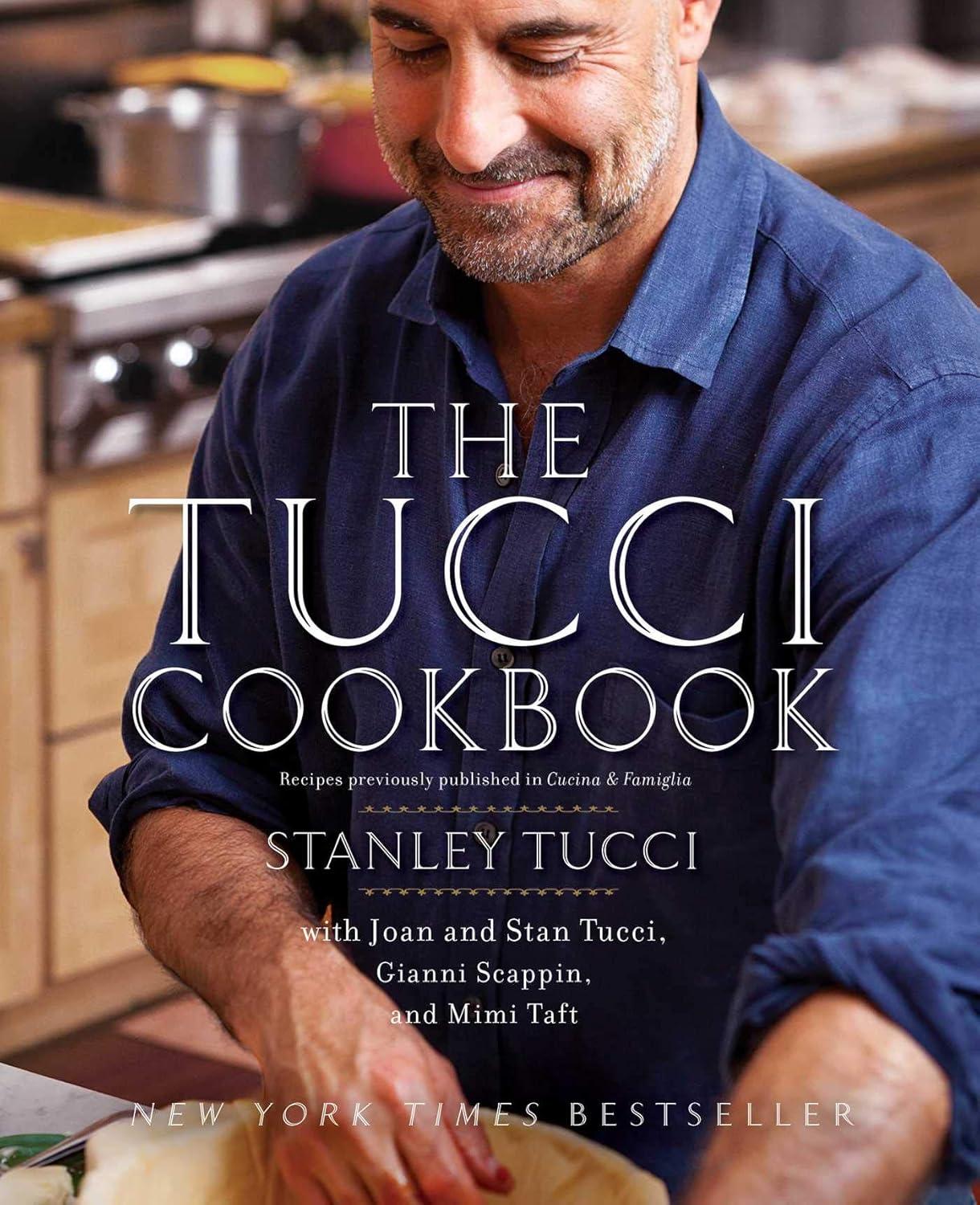Anti-Inflammatory Diet Slow Cooker Cookbook: Prep-and-Go Healing

What if the kitchen appliance that demands the least could help with the health concern that demands the most? The Anti-Inflammatory Diet Slow Cooker Cookbook: Prep-and-Go Recipes for Long-Term Healing stakes its appeal on that premise, blending hands-off cooking with an eating pattern many turn to for managing inflammation over time.
This review looks at how convincingly the book marries convenience with intention-whether its “set it and forget it” rhythm can realistically support daily, lower-inflammation meals, and how the recipes fit into real schedules and appetites-without promising miracles or glossing over the work of habit.
Table of Contents
Core Features for Anti Inflammatory Cooking
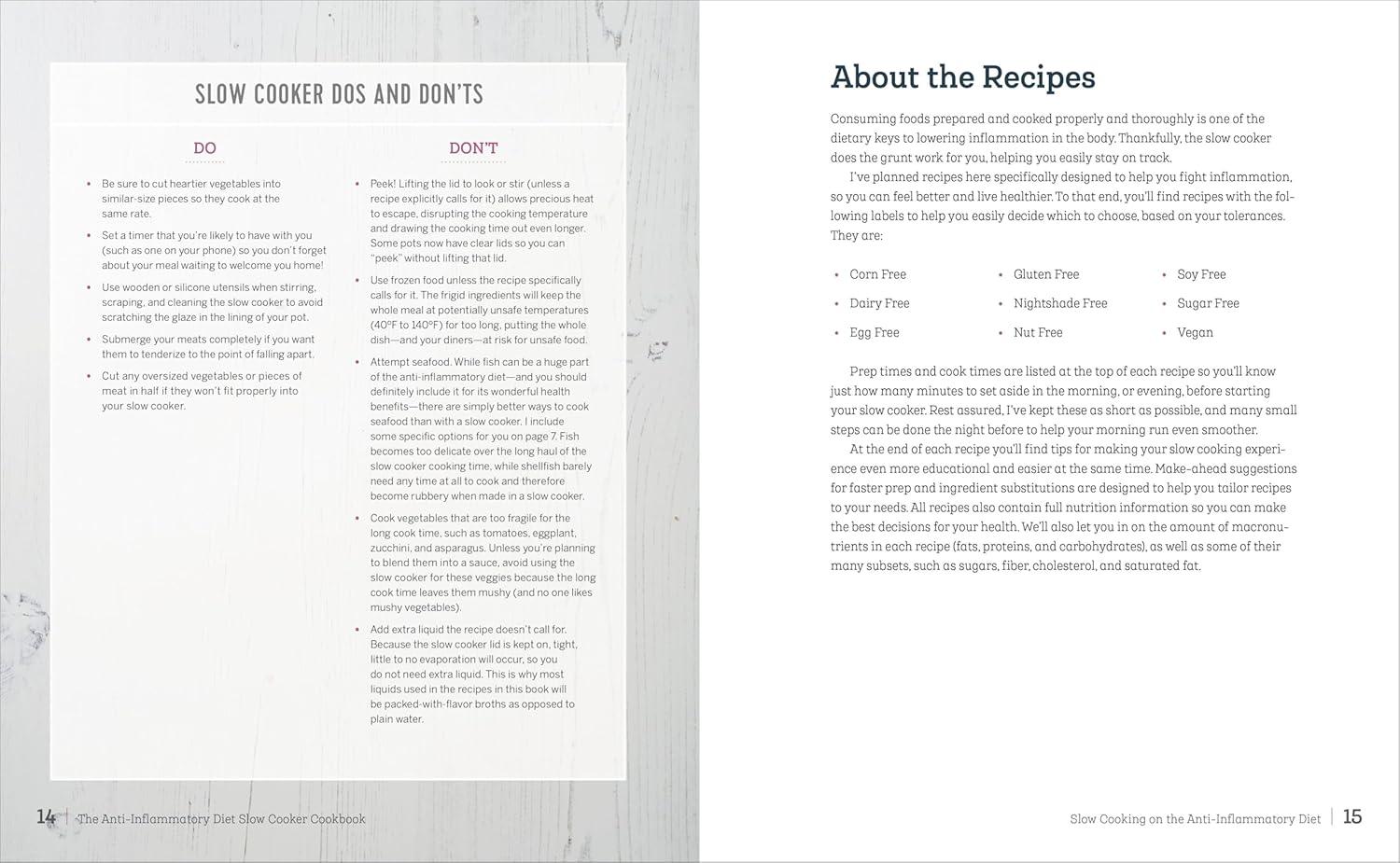
Built around slow-cooker convenience, this cookbook leans into whole-food, low-processed ingredients that support calmer joints and digestion without asking you to babysit a pot. The recipes consistently pair lean proteins with fiber-rich vegetables and anti-inflammatory staples like turmeric, ginger, garlic, leafy greens, and omega-3 sources, and the “prep-and-go” format keeps knife work and pre-cooking to a minimum. I like that many dishes finish with fresh herbs or a splash of citrus to lift flavor without extra sodium, and that the instructions are engineered for set-it-and-forget-it success-layering dense veg on the bottom, proteins in the middle, and delicate add-ins toward the end to prevent mushy textures. The ingredient lists favor pantry-friendly items you can find in any supermarket, which makes long-term adherence to an anti-inflammatory routine far more realistic.
From a usability standpoint, the timing windows are practical for weekdays, and most recipes adapt cleanly to either Low or High settings-great if you’re juggling work hours. Seasoning is thoughtfully restrained, letting you build intensity with spice blends rather than sugar or dairy; if you’re sodium-sensitive, it’s easy to keep broths low-salt and rely on aromatics for depth. On the flip side, slow cookers don’t brown by themselves, so if you crave deeper maillard notes, plan to sear quickly or finish under the broiler-an optional extra step worth taking for some stews and shredded meats. Those avoiding nightshades should watch for tomato- or pepper-based recipes and swap in carrot, squash, or beet where appropriate. In my tests, a mid-size (about 5-6 quart) cooker handled yields best, and leftovers reheated nicely without breaking down-ideal for batch-cooking your anti-inflammatory meals for the week.
Recipe Variety Flavor and Difficulty
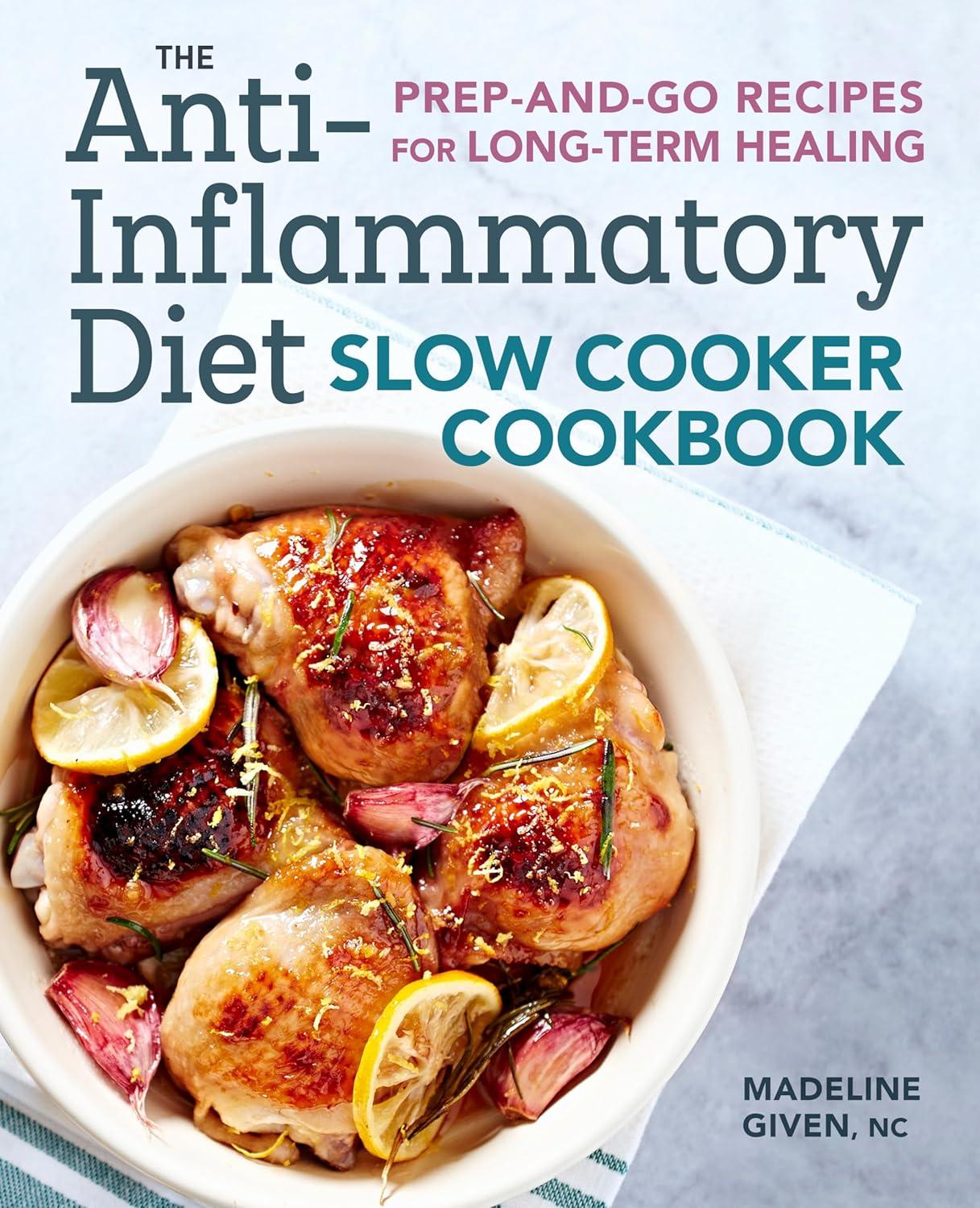
Expect a broad, weeknight-friendly spread that leans plant-forward without feeling austere. The collection moves comfortably from steel-cut oat breakfasts and vegetable-packed soups to hands-off curries, tagines, and shredded protein mains that convert into bowls or lettuce cups the next day. Seasoning is where it shines: layers of turmeric, ginger, garlic, and warm spices are balanced with lemon, vinegar, and herbs, delivering clean, bright flavors rather than heavy sauces. Poultry, legumes, and vegetables take center stage, with seafood and occasional beef used thoughtfully; nightshade-light options are easy to find, and classic comfort dishes are reimagined with tomato-free or dairy-free twists that still taste satisfying.
On difficulty, this is largely beginner-friendly “prep-and-go” cooking. Most dishes ask for 10-20 minutes of chopping and measuring, then hours of hands-off time; a minority recommend an optional sear to deepen flavor, which is worth the extra five minutes if you like richer results. Ingredient lists skew practical-olive oil, legumes, root veg, leafy greens-so you won’t chase specialty items, and liquid ratios are tuned to keep lean cuts moist in the slow cooker. The only caveats: seafood recipes demand attention to shorter cook windows, and if you prefer bold heat or salt you may want to finish with a squeeze of citrus, fresh herbs, or a pinch more seasoning. Overall, the payoff is consistent: approachable techniques that deliver soothing, anti-inflammatory meals with genuine flavor payoff.
Slow Cooker Usability and Meal Prep Flow

As a slow-cooking guide, this book streamlines weeknights by focusing on genuine prep-and-go dishes: gather, chop, load, and let the pot do the work. The instructions are concise and sequenced for low-friction mornings-think grouping all chopping up front, clear cues on layering (dense veggies first, proteins on top), and straightforward finishers to add at the end for brightness. In testing, the recipes fit naturally into an evening-then-morning routine: prep components the night before, refrigerate them in containers, and transfer to the crock before you leave. Cook-time guidance is practical and predictable, which matters when slow cookers run hot or cool; dishes finished within the expected window on both programmable and manual units, and the flavors held up without babysitting. The ingredient choices skew toward whole-food staples common to anti-inflammatory cooking-aromatics, herbs, and smart fats-so you’re not hunting down specialty items to make dinner happen.
The overall meal prep flow encourages batching without turning Sunday into an all-day project. A single produce session yields components for multiple recipes, and the seasoning frameworks repeat just enough that you can scale easily while keeping variety (soups, stews, and saucy proteins take well to this approach). For best results, treat searing as a strategic option rather than a mandate: the recipes are designed to work without it, but a fast stovetop brown on certain cuts adds welcome depth if you have a few extra minutes. Portion guidance is realistic for standard 5-6 quart slow cookers, and the finishes-fresh herbs, citrus, or a drizzle of olive oil-do the heavy lifting for last-minute “lift” without extra dishes.
- What works: true dump-and-go assembly; clear layering that protects texture; dependable cook-time ranges; finishers that prevent muted flavors; easy batching from one chopping session.
- Nice touches: pantry-friendly spices (think turmeric, garlic, ginger), sensible yields, and instructions that tolerate minor timing drift on busy days.
- Heads-up: skipping any browning can leave richer meats a bit flatter-budget 5-7 extra minutes if you want deeper flavor.
- Fit check: recipes sit comfortably in mid-size crocks; smaller units may require trimming veg or reducing liquid to avoid overfilling.
Pros Cons and Value for Money
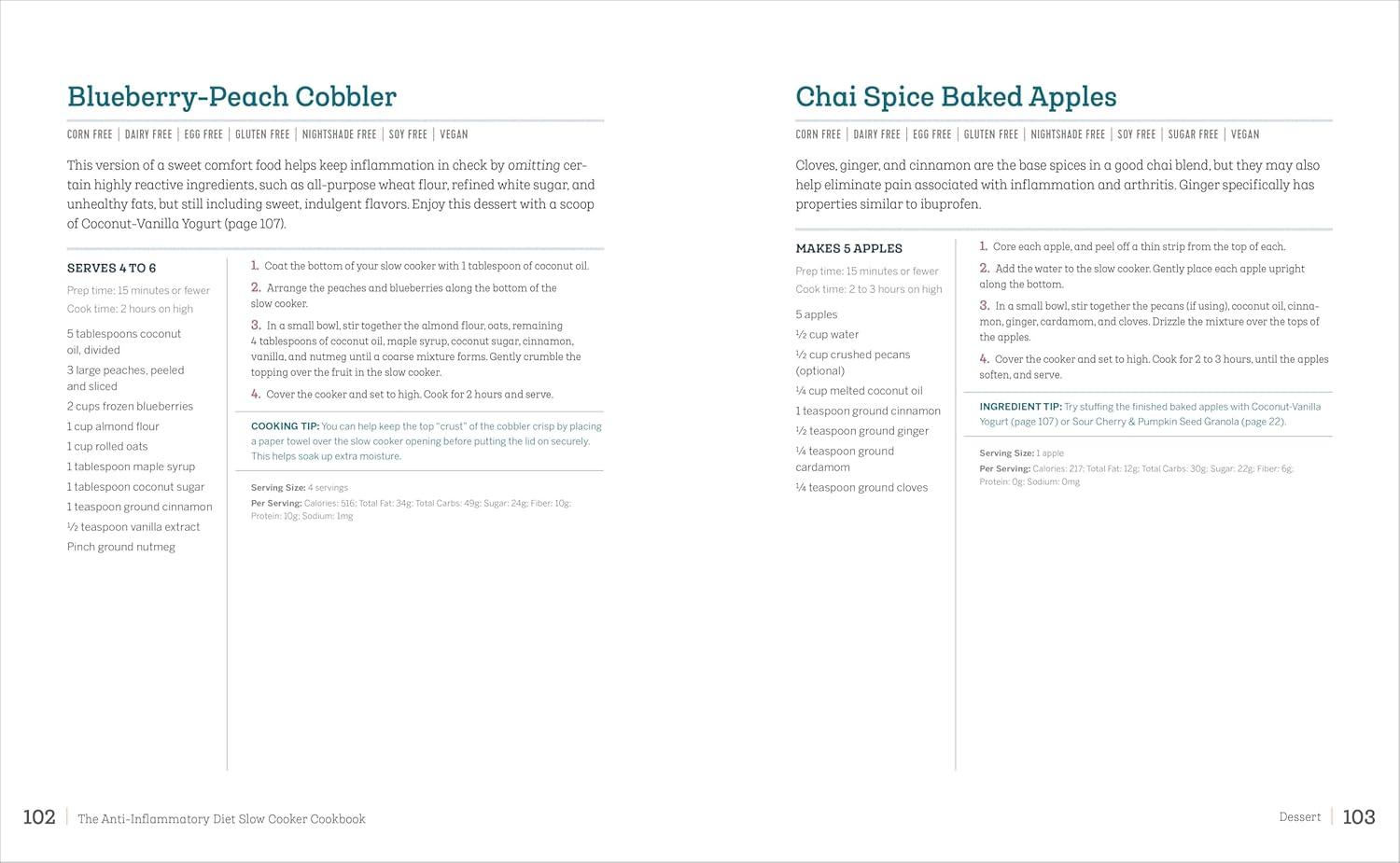
Hands-on testing shows this is a genuinely time-saving, set‑and‑forget resource for eating with less inflammation without sacrificing weeknight sanity. The recipes are structured for minimal prep (often 10-20 minutes) and make smart use of spices and aromatics to build flavor without frying, which keeps cleanup simple. Ingredient lists favor accessible, whole-food staples you can find at any supermarket, and the book’s nutritional panels per serving (including sodium and added sugars) make it easy to align meals with personal dietary goals. Clear notes flag common triggers and offer substitution ideas-handy when avoiding dairy, gluten, or excessive nightshades-and many recipes provide both Low and High settings so you can match cook times to your schedule.
- Pros: Truly “prep-and-go” instructions that skip searing and extra pans, saving time and dishes.
- Pros: Practical substitutions and allergen callouts reduce guesswork for anti-inflammatory cooking.
- Pros: Nutritional information per recipe helps monitor sodium and added sugars.
- Pros: Everyday ingredients keep shopping straightforward and costs predictable.
- Pros: Reliable cook-time ranges (Low/High) suit varied schedules and preserve vegetable texture by timing delicate add-ins.
There are trade-offs. Skipping browning means you’ll occasionally want to finish with acid (lemon, vinegar) or fresh herbs to boost brightness, and the seasoning leans conservative-great for sensitive palates, but adventurous cooks may reach for extra chiles or spices. Photography is sparse, offering limited visual guidance, and most recipes are calibrated for a 6‑quart slow cooker, with minimal scaling advice for larger models. Some dishes include legumes, grains, or nightshades, so strict elimination-phase eaters will need to cherry-pick. From a value standpoint, it’s a budget-friendly way to build a weeknight rotation that aligns with anti-inflammatory principles; if you cook from it a few times a week, the cost-per-use quickly undercuts meal kits or specialty programs.
- Cons: Limited photos; newcomers may miss step-by-step visuals.
- Cons: Flavor profiles can read mild unless you finish with acid or extra spice.
- Cons: Servings skew to 4-6, with scant guidance for 8‑quart cookers or halving.
- Cons: Not every recipe suits strict elimination phases (occasional legumes/grains/nightshades).
Customer Reviews Analysis

Customer feedback for Anti-Inflammatory Diet Slow Cooker Cookbook: Prep-and-Go Healing skews strongly positive. Reviewers praise its approachable “prep-and-go” style, reliable flavor, and practical health guidance aimed at reducing inflammation. Many highlight that it helps them eat well without living in the kitchen-some even adapt recipes to an Instant Pot or air fryer for added convenience. A few caveats appear: certain ingredients can be hard to find, some slow-cooker times seem excessive for delicate items (like quinoa and ground meats), and there’s an isolated complaint about receiving a used-looking copy.
- What customers liked
- Flavor and variety: Multiple readers report consistent, tasty results across recipes (“made 3 recipes and all were good”) and appreciate the breadth from soups to stews.
- Ease and speed: “Prep-and-go” assembly, straightforward directions, and quick put-together meals; easy to follow for those who don’t enjoy cooking.
- Health-forward guidance: Clear anti-inflammatory focus with nutrition tips; noted as especially useful for people managing autoimmune issues.
- Flexible cooking methods: While designed for slow cookers, readers successfully adapt to Instant Pot and even a large air fryer oven for faster results.
- Design and presentation: Described as nicely done with appealing layout and helpful illustrations.
- Value and community: Several buyers gifted extra copies and recommended the book to friends; “it really works” recurs as a theme.
- Where buyers saw room for improvement
- Ingredient availability: A few recipes include items that can be tricky to source.
- Cook times for certain ingredients: Some schedules run too long for quinoa and ground meats; readers suggest trimming times to avoid overcooking.
- Physical copy issues: Isolated report of a book arriving in used condition.
| Theme | Positive Mentions (approx.) | Negative Mentions (approx.) | Representative Takeaway |
|---|---|---|---|
| Taste & variety | 70% | – | Consistently flavorful results; broad menu keeps meals interesting. |
| Ease of use & prep | 40-50% | – | Simple, “prep-and-go” instructions suitable for busy or reluctant cooks. |
| Health guidance | 45-50% | – | Nutrition tips and anti-inflammatory focus appreciated, including for autoimmune needs. |
| Design & illustrations | 20-25% | – | Nicely presented with helpful visuals. |
| Adaptability (equipment) | 15-20% | – | Works beyond slow cooker-Instant Pot and air fryer adaptations reported. |
| Ingredient availability | – | 5-10% | Some ingredients may require extra sourcing effort. |
| Cook times | – | 5-10% | Reduce time for delicate items (quinoa, ground meats) to avoid overcooking. |
| Physical condition on arrival | – | 5-10% | Occasional complaint about receiving a worn-looking copy. |
Bottom line: Most reviewers find this cookbook a practical companion for flavorful, anti-inflammatory meals that don’t demand long hours in the kitchen. Expect accessible recipes, solid nutrition pointers, and flexibility in cooking methods; plan to adjust cook times for specific ingredients and be prepared to substitute when certain items are harder to find.
Pros & Cons
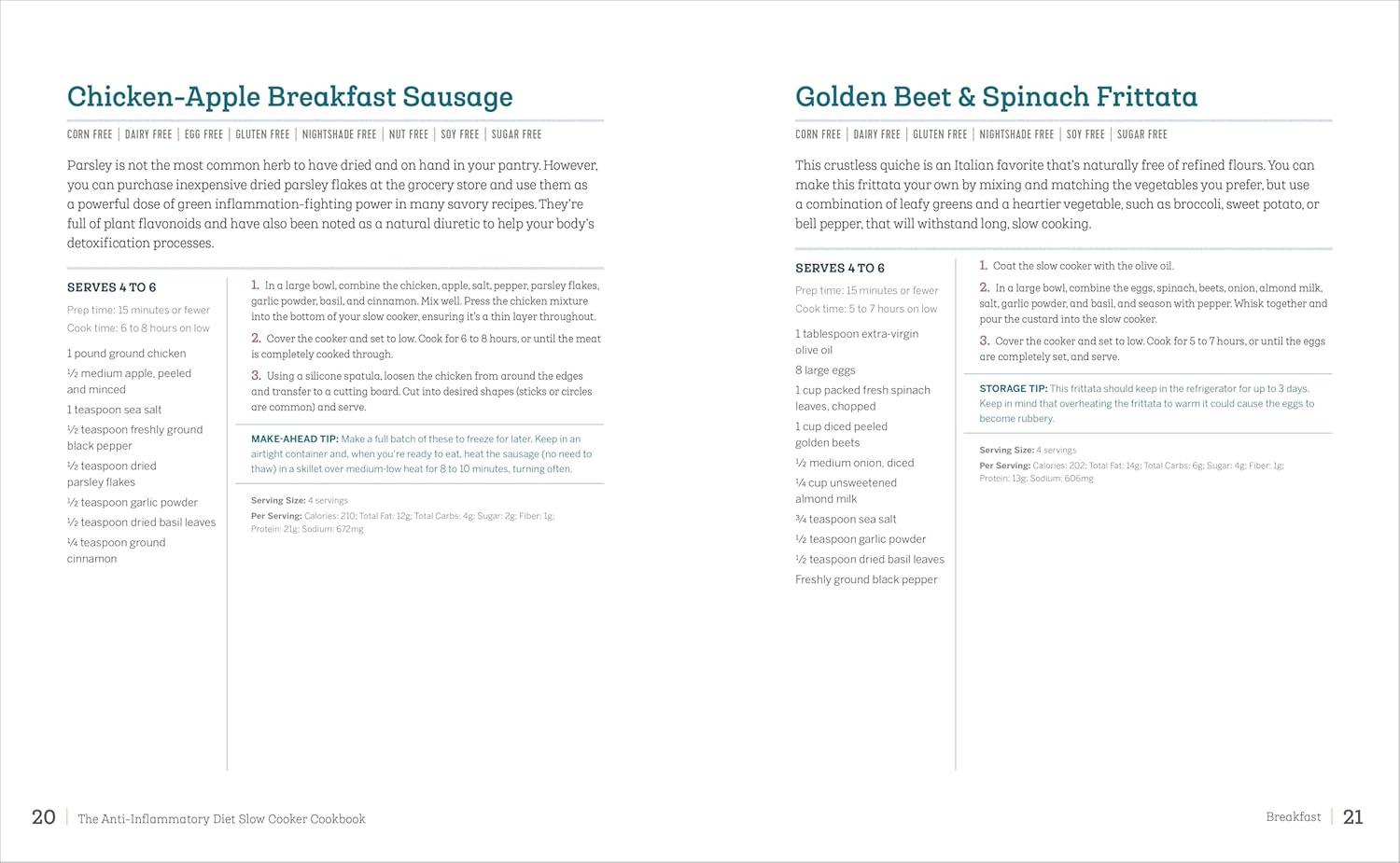
| Type / Category | Cookbook – anti-inflammatory diet; slow-cooker (crockpot) recipes |
| Key Functions / Features | Prep-and-go recipes designed for minimal hands-on time; emphasizes whole foods and anti-inflammatory staples; guidance for planning, prepping, and simplifying weeknight meals |
| Author / Publisher | Author: Madeline Given, NC; Publisher: Rockridge Press |
| Format | Paperback; Kindle ebook |
| Skill Level | Beginner-friendly instructions; suitable for home cooks using a standard slow cooker |
| Recipe Focus | Leans on vegetables, lean proteins, legumes, herbs, and anti-inflammatory fats; minimizes refined sugars and ultra-processed ingredients |
| Special Features | “Dump-and-go” style directions; make-ahead and freezer-friendly guidance; practical pantry tips and ingredient substitutions |
| Price Range | Typically under $20 USD for paperback; ebook often lower |
Pros
- Hands-off slow-cooker format reduces active cooking time for busy schedules.
- Clear, step-by-step directions and simple ingredient lists are approachable for beginners.
- Focus on whole-food, anti-inflammatory staples helps structure long-term eating habits.
- Uses widely available, budget-conscious ingredients to keep costs down.
- Batch-friendly recipes make it easy to cook once and eat multiple times.
Cons
- Requires a slow cooker; not ideal for readers who rely on stovetop or oven methods.
- Slow-cooked dishes can skew softer in texture, which may not suit all palates.
- Limited depth on medical science; readers wanting extensive theory may need additional resources.
- Vegetarian and pescatarian options may feel outnumbered by meat-based recipes.
- Occasional pre-searing or stovetop steps can lessen the “dump-and-go” convenience.
Q&A
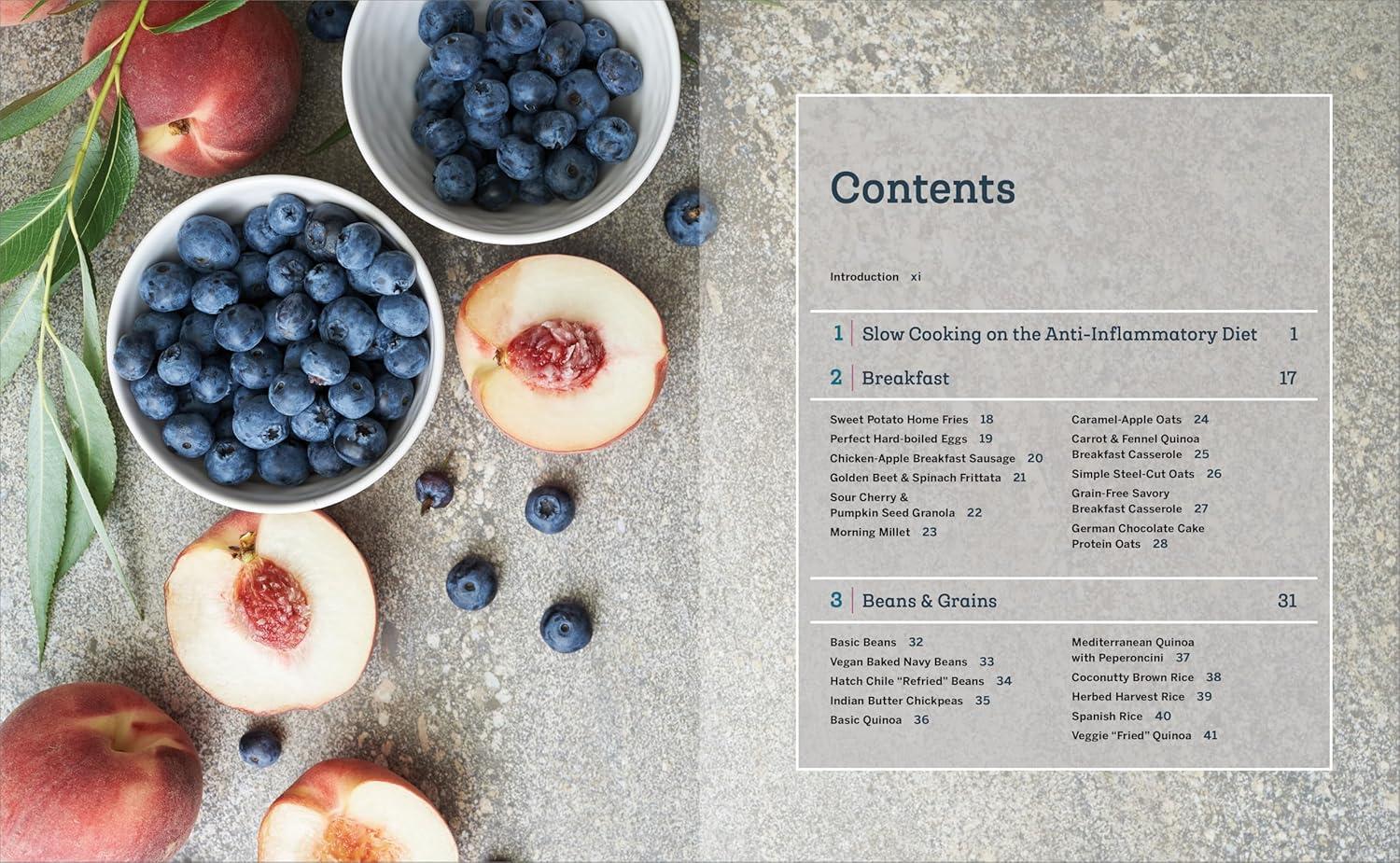
Question: Will these recipes work with my current slow cooker or an Instant Pot on slow-cook mode?
They’re designed for standard electric slow cookers and generally translate well to a multi-cooker’s Slow Cook setting. Mid-size pots (about 4-6 quarts) tend to give the best results; aim to fill the crock about halfway to two-thirds full. If using a multi-cooker, choose the “normal” slow-cook heat, use a glass lid if available, and start with the listed times, then adjust in future batches based on doneness.
Question: What makes the recipes “anti-inflammatory,” and which ingredients are emphasized or minimized?
The approach favors whole, minimally processed foods: plenty of vegetables, legumes, whole grains, lean proteins, olive oil, nuts, and herbs/spices such as turmeric, ginger, and garlic. It steers away from ultra-processed items, refined flours, excess added sugars, and trans fats. Always tailor choices to your personal health needs and any advice from your healthcare provider.
Question: How much hands-on work is involved-are these truly “prep-and-go” dishes?
Expect quick chopping and measuring, then a “set it and let it simmer” cook. Some recipes may suggest optional stovetop browning to deepen flavor; skipping that step still yields a finished meal with a simpler profile. For food safety, pre-cook certain ingredients as needed (for example, boil soaked red kidney beans for 10 minutes before slow cooking).
Question: Is the recipe variety broad enough for weekly meal planning?
Yes for slow-cooker-friendly categories: soups and stews, chilis, braises, curries, shredded proteins, bean-and-grain dishes, and some breakfast options like oats. These work well for batch cooking and leftovers. For crisp textures or quick-seared dishes, pair with fresh sides or finish components under a broiler or in a skillet.
Question: I’m gluten-free/dairy-free/vegetarian. Will this fit my diet without a lot of extra work?
It isn’t a certification-focused allergen manual, but many slow-cooker meals adapt well. Use gluten-free grains or pasta, dairy alternatives, and plant proteins (beans, lentils, tofu) where structure and flavor make sense. Always check labels on broth, sauces, and condiments, and season to your needs.
Question: Does it include nutrition facts, photos, or meal-planning tools?
Those features vary by edition. Check the retailer’s preview (Look Inside or sample pages) to confirm per-recipe nutrition data, serving yields, photo density, and any planners or shopping lists. If nutrition numbers aren’t printed, you can estimate them with a recipe nutrition calculator by entering the ingredients.
Embody Excellence
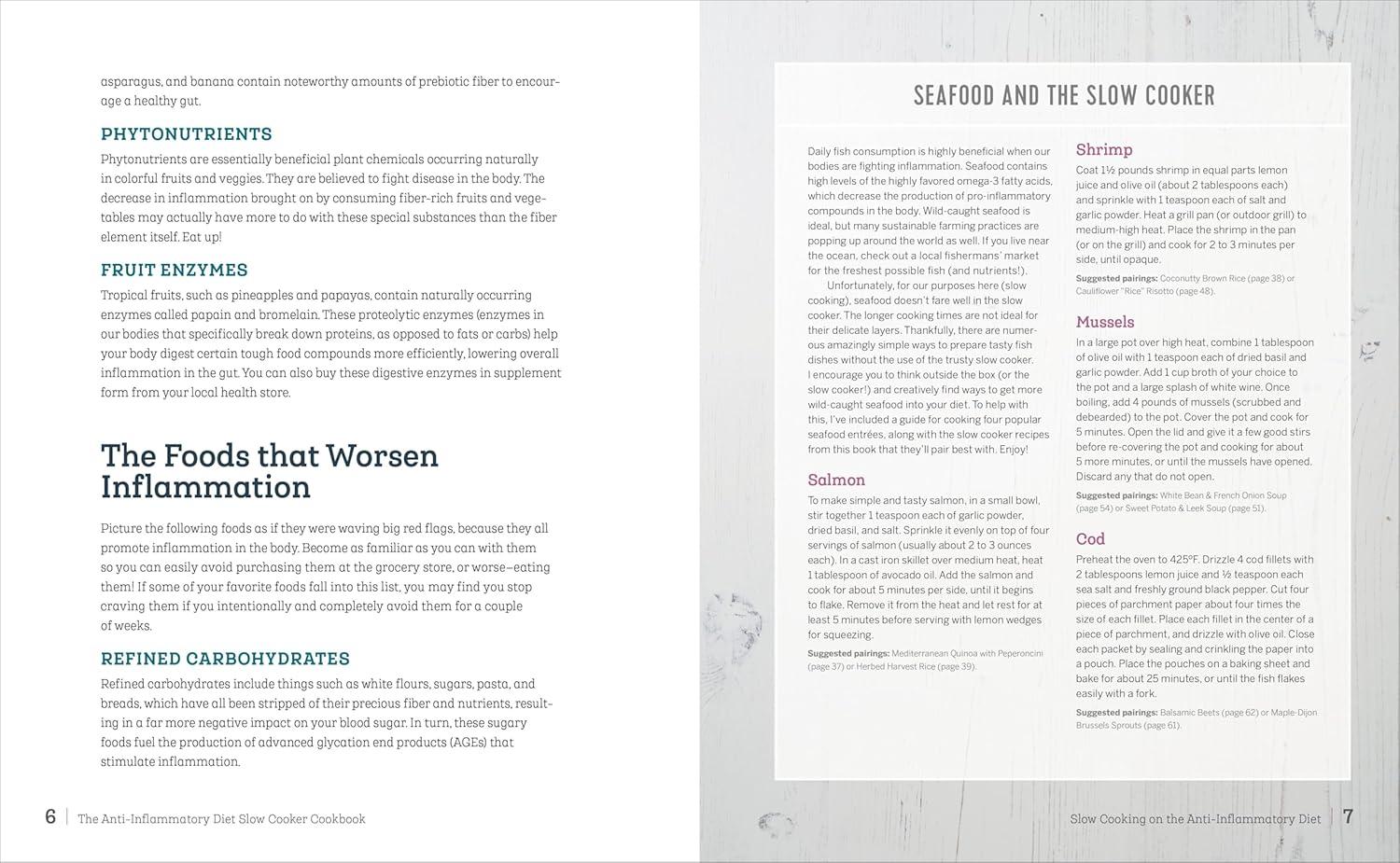
In the end, Anti-Inflammatory Diet Slow Cooker Cookbook: Prep-and-Go Healing stands out for pairing evidence-informed guidance with true weeknight practicality. The set-and-forget recipes keep prep minimal, the ingredient lists are accessible, and the book’s tips-smart swaps, make-ahead notes, and clear nutritional callouts-make sticking to anti-inflammatory principles feel manageable. Flavors are familiar yet fresh, portions are sensible, and the structure encourages steady habits over quick fixes.
If you want to ease kitchen stress while supporting long-term wellness, this is a calm, capable companion. It won’t do the work for you, but it will make the work simpler-and that’s often exactly what a sustainable change needs.



